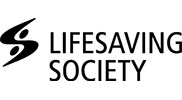FAQ
How can I have my Red Cross Aquatic Safety Instructor qualification recognized by the Society for Lifeguarding?
You can go through a recognition of prior learning process:
- Each ALS (Aquatic Lifeguard) wishing to be recognized as a Lifeguard Instructor by the Society for Lifeguarding to teach the "Swim for Life" program, including the Young Lifeguard program, must undergo a recognition of prior learning process.
- Register for a RDA MN workshop.
- Attend the 3-hour RDA MN workshop via videoconference with a Society for Lifeguarding Instructor.
- Participate in a Lifeguard Instructor requalification within three months of the workshop; registration for this requalification is done directly through the organization offering the training.
- After successfully completing these two steps, the Society for Lifeguarding Lifeguard Instructor certification will be issued.
Several dates for the Lifeguard Instructor Recognition of Prior Learning are available.
For all available dates and to register, please visit our registration platform.
WHAT ARE THE GUIDING PRINCIPLES OF THE SWIM FOR LIFE PROGRAM BY THE SOCIETY FOR LIFEGUARDING?
The "Swim for Life" program is deeply rooted in the mission of the Society for Lifeguarding. Any serious attempt to eliminate drowning in Canada starts with mastering swimming, which is why all Canadians must learn to swim.
"Swim for Life" focuses on the acquisition and development of skills, as well as basic swimming styles, for learners of all ages and varying levels of ability. The learning of skills and the achievement of the Canadian Swim to Survive Standard are included in the "Swim for Life" program.
The "Swim for Life" program is designed to be accessible, flexible, motivating, and fun. At every lesson, instructors ensure that swimmers spend ample time practicing in the water.
The "Swim for Life" program offers an easy and coherent transition to the lifeguard and leadership certifications of the Society for Lifeguarding by offering a comprehensive and consistent program that teaches both swimming and lifeguarding.
The Aqua Bon public education campaign is part of "Swim for Life," providing information and experiences to help everyone make informed decisions when they are in, on, or near water or ice. Safety tips based on our drowning research are tailored to participants at each level of "Swim for Life."
WHY DOES "SWIM FOR LIFE" FOCUS ON ONLY THREE STYLES OF SWIMMING?
Freestyle, backstroke, and breaststroke are basic styles; individuals who develop, learn, and master these techniques become efficient swimmers. Investing time in mastering the mechanics of these styles early on promotes fluidity in swimming. Swimmers are inclined to practice the sport regularly and thus maintain healthy lifestyle habits (Swim for Life).
WHY INTERVAL TRAINING INSTEAD OF ENDURANCE TRAINING?
Interval training consists of alternating periods of work and recovery. The intensity and duration of the effort, the rest period, and the number of repetitions define the training pace. This method promises energy efficiency for all active individuals. Throughout the "Swim for Life" program, this goal is achieved in two phases:
- Initially focusing on basic mechanisms, emphasizing the acquisition of efficient swimming techniques over relatively short distances, which increase (along with performance criteria "To Watch") from one level to the next.
- Subsequently, by varying educational exercises or swimming styles, the number of repetitions, and distances. The pace provided by the swimmer is specific according to the progression of the "Swim for Life" program.
WHO CAN TEACH THE YOUNG LIFEGUARD PROGRAM?
Lifeguard instructors and "Swim for Life" instructors holding up-to-date certifications teach and evaluate all the items in the Young Lifeguard program.
The "Swim for Life" program by the Society for Lifeguarding is offered from coast to coast, in both French and English. In addition to the National Lifeguard qualification, the Society for Lifeguarding offers its affiliated members across the country a full range of lifeguard and leadership training. Its provincial and territorial divisions also offer a variety of Aqua Bon advice for public education, aquatic safety audits, training for aquatic managers, and other courses and services specific to each division.





